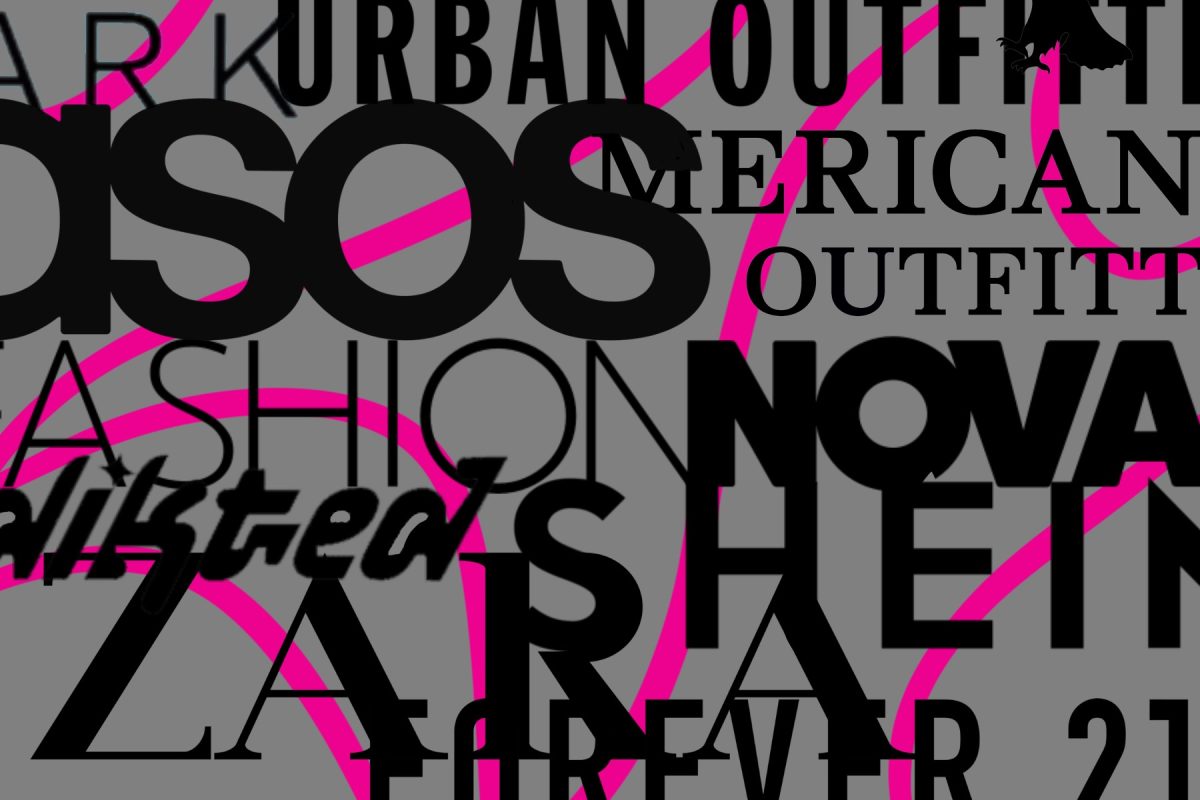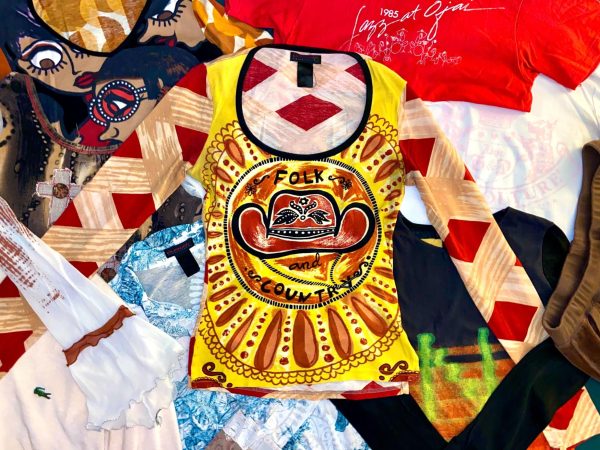It is very likely that you’ve recently seen Shein hauls on TikTok, a good amount of the clothing being deemed unusable either for the style or size. Where do the influencers put those pieces? Maybe they go to thrift stores, but often they will go straight into the trash. The fast fashion industry has created a monster of a problem with waste, as currently, 7% of global landfills are textiles.
Fast fashion is the practice of overproduction by clothing companies to produce large amounts of clothing for cheap, allowing them to sell products to consumers at a much lower market price than competitors and causing shoppers to buy more as it becomes more accessible to purchase large amounts of clothing. The cycle continues, with the supply always exceeding the demand.
With the advent of social media and influencers, people want to buy what they see immediately. Trends become shorter and shorter until they turn into “microtrends,” such as the VSCO girl trend, cottagecore or denim patchwork. Fast fashion companies thrived in this culture which shamed excessive re-wears of a clothing item, promoting it by supplying clothing within weeks of popularity. Not only did they supply the demand, they also created it.
In the course of a year, clothes release over half a million tonnes of microfibers (small bits of plastic shed from clothing during wear, washing or disposal) into the ocean
There has been an increase in clothing consumption, with average shoppers owning 60% more clothing than they did 15 years ago, but in that same measure of time, the amount of times an item is used has gone down 36%. This means we are purchasing more, wearing less, and going through clothing at a much faster and more alarming rate than in the past.
Fast fashion has become intricately bound with the modern culture surrounding our clothing, with the abundance of fast fashion companies such as Shein and Zara thriving. Their methods in obtaining the “fast” in fast fashion, however, are notoriously dangerous. These clothing companies move to the location that gives them the cheapest labor, often paying only pennies per garment, in unsafe conditions.
Many workers for fast fashion companies operate under the threat of gendered violence as the majority of garment workers are women. The conditions and pay are extremely atrocious to the point that the garment industry is the second highest at-risk industry for modern slavery. One of many examples of dangerous conditions occurred in 2013 when a garment factory in Bangladesh collapsed, the incident killed 1,132 people and injured 2,500 more.
The second way fast fashion companies are able to produce such cheap clothing is due to the material their products are made of. Almost half of all clothing is made from polyester, a plastic derived from crude oil and natural gas. In the course of a year, clothes release over half a million tonnes of microfibers (small bits of plastic shed from clothing during wear, washing or disposal) into the ocean, which is equal to 50 billion plastic bottles. Polyester is extremely poor quality, falling apart after just a few uses. This forces the consumer to wear it only a few times and then purchase new clothing.
The clothing industry is incredibly wasteful to begin with, and fast fashion companies have only exacerbated it. The production of clothing uses an obscene amount of water — producing 20% of global wastewater — in creating dye, washing the clothing before the sale and then washing it once the consumer has purchased it. The use of synthetic fibers leeches microfibers into the ocean, the land and into our bodies, with microfibers being found from the top of Mount Everest to unborn fetuses.
The physical waste of clothing being discarded is discovered in each step of production to after the sale. The companies who overproduce either discard or incinerate the clothing they do not sell and all of the fabric they did not use for the clothing. Put in perspective, the amount of clothing created each year is 80 to 100 billion items, and 15% of what is manufactured — 12 to 15 billion items — are not sold.
There has been an increase in clothing consumption, with average shoppers owning 60% more clothing than they did 15 years ago.
Once the items are bought, the consumer uses it and then throws it away or donates it. It is for this reason that the secondhand industry is predicted to double in size by 2029. At the end of the item’s life, it is destined for landfill. Every year, 92 million tons of clothing end up in a landfill, and this waste will only increase as the fast fashion market grows.
The clothing industry is responsible for 10% of all global carbon emissions, with predictions of growing to 15% by 2030. Fast fashion as a trend and as a culture of overconsumption has created an industry that is incredibly destructive to the workers who make the clothing for a living, the environment, and to the consumers who are ingesting microfibers whether they have purchased the clothing or not.
It is important to understand the impact this industry has, especially considering how damaging its actions are to those in every corner of the world.
There are ways that you as an individual can mitigate these effects. One way is to invest in sustainable brands and items of clothing. This ensures that the garment workers were paid a liveable wage in good conditions, and the quality of the clothing will last for years. Another way is to purchase clothing with 30 wears in mind, a number popularized in a #30wears trend. If you cannot imagine yourself using an item at least 30 times, refrain from buying it.
Using clothing rental sites where you can rent an item for a single wear can be an additional method to avoiding fashion fashion, that way it is immediately returned and does not sit in your closet afterward. Consumers can also reduce fashion waste by purposefully choosing an item for the material it is made out of. Avoid synthetic materials that will not last, and opt for natural fibers like wool or cotton that will survive the countless wears and washes it will have to undergo. This will allow individuals to be able to donate the item if they choose to part with it, instead of throwing away a torn or ruined piece of cheap clothing.
There are multiple ways to combat your role in the cycle of overproduction and overconsumption created by the fast fashion industry and social media influencers. It is one of the largest markets in the world and often, environmental causes can feel overwhelming with no options for the individual to do their part. However, with the clothing market being half consumer and half producer, this is a market in which you can make a difference.
















